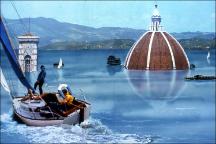Art, Nature & the Environment in Italy
Overview
This trans-historical module explores the complex and shifting relationships between art, nature and the environment in Italy during the Renaissance (c.1350-1550) and throughout the twentieth century (c.1900-2000).
Although apparently so unconnected, there are deep similarities between twentieth-century attitudes to nature and the environment and those of late Medieval and Early Modern societies. This module draws from the intellectual approach of the visionary scholar Eugenio Battisti, who simultaneously looked back to the Renaissance at the same time responding to contemporary artistic trends, mutually informing his reading of both. The stark differences and strange echoes that emerge from this approach will help to illuminate the preoccupations of each period. Throughout, we will ask how aesthetic concerns have shaped definitions of nature and in turn how the material and social transformation of the landscape has informed artistic practice.
Art historians have long argued that landscape was of little interest to artists before the sixteenth century, but we will challenge this view and examine the ways in which concepts of nature, landscape and the elements permeated late medieval and renaissance texts, images, and architectural designs. We will consider the modern-day relevance of these past forms and debates as they have been contested in the twentieth century, exploring a rich and diverse tradition of artists who have engaged with Italy’s changing natural landscape throughout the twentieth century, integrating these concerns into a broader political discourse and drawing attention to the social conditions that shape the landscape.

Module information
- Module title
Art, Nature & the Environment in Italy- Module number
HOA00090M- Convenors
Amanda Lillie and Teresa Kittler
For postgraduates
- Handbooks
- MA Modules 2023-2024
- Assessment
- Postgraduate funding
- PhD/MPhil supervision and training
- Resources
- Student activities
